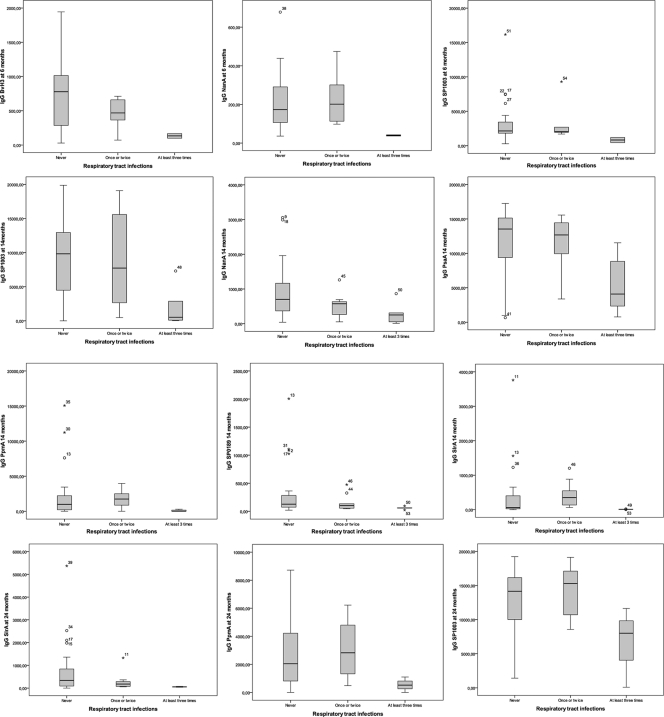FIG. 2.
Association between specific antipneumococcal IgG levels and RTIs in the third year of life. IgG levels at 6, 14, and 24 months are compared with the numbers of doctor visits for RTIs in the 3rd year of life. Higher levels of IgG against certain pneumococcal proteins were correlated with a lack of doctor visits for RTIs (first box in every box plot). The median level of IgG against certain pneumococcal proteins was lower in children with at least 3 doctor visits for RTIs (third box in every box plot). This was statistically significant for all pneumococcal proteins presented in these box plots, except for PpmA and SP1003 at 24 months (P = 0.065 and 0.075, respectively). The analyses were conducted for the group of children with at least three doctor visits versus children with a lack of doctor visits. Results for children with one or two doctor visits were included in this figure but not analyzed. P values are presented in Table 4. Values are median MFI levels, with an interquartile (25 to 27%) box, a 5 to 95% range, outliers (○), and extreme outliers (*). Numbers represent child identification numbers.

